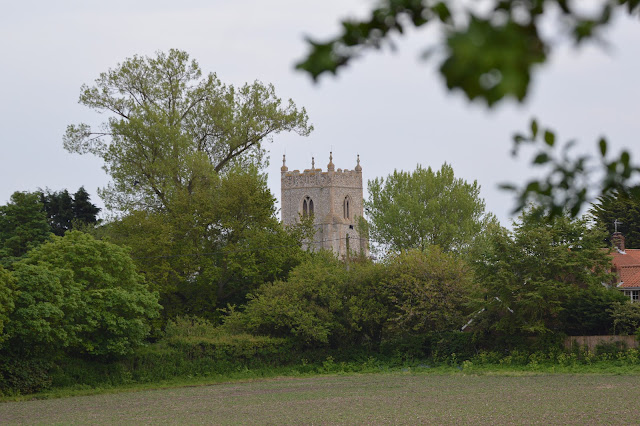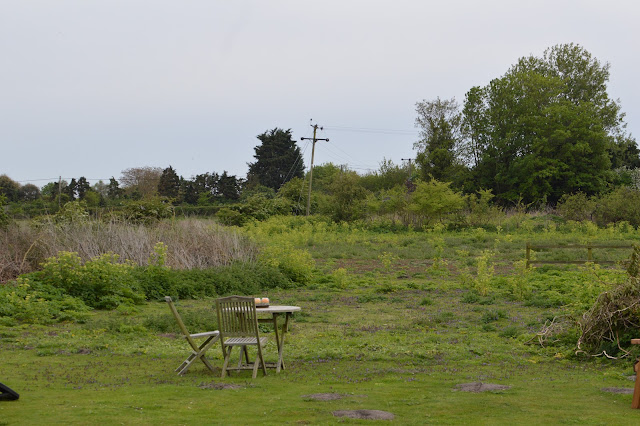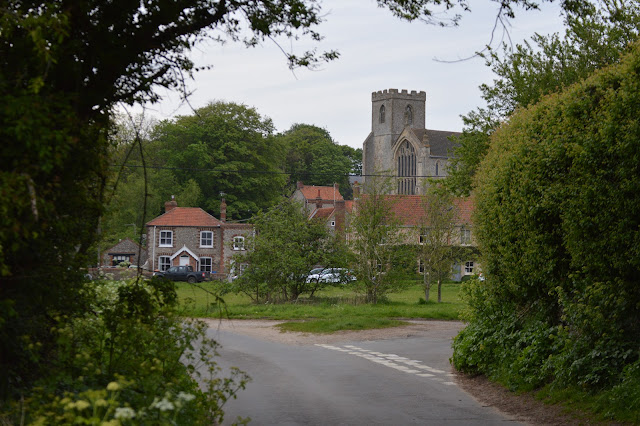
It was time to leave Suffolk. Every moment there had been unique. New moments, new memories made. There's nothing like experiencing another world to see what it may bring.
Actually I lie, I was on the border between Suffolk and Norfolk so there was one more nature reserve I wished to visit as I headed North.
Carlton Marshes forms part of Oulton Marshes to make up a vast expanse of reed bed. The area is due to be transformed into a brand new reserve, rivaling that of Minsmere I had just left, I was assured by a passing naturalist. It has got some way to go to achieve this but the funding is in place and the premise looks good. I would love to return in a few years to see the transformation.
Meanwhile as I extricated myself from the van, I took in the views before me. Very overgrown areas of reed bed and subjugated waterways.
Nature abounded here but it could definitely thrive given time and knowledge.
Moorhen had young that were tucked away in the reeds which they fed before me.
St Marks Flies were everywhere. Great food for the Passerines such as Swallows and House Martins. Swifts love them too.
I followed the path along the river and looked back towards the visitor centre.
The views over the fields seemed never ending and quite sparse. The chances to make it a gem were all apparent.
Skylark abound here and one ascended before me relinquishing it's tune.
Apart from the river there aren't too many bodies of water. Something that will be rectified when the work starts here.
There is a small area of shallow scrapes which had a couple of Avocet, Lapwing, Little Egret and Gadwall but little else.
As ever, the raptor most likely to show in East Anglia , the Marsh Harrier glided across the reed beds in search of a meal.
I found another Skylark but conveniently on the ground this time.
One of the reasons to drop by here was a rare American Bittern that had been seen around for the last few days. As with the typical behaviour of Bitterns -either the usual European species or this rarity - it was staying well hidden within the reeds. I only had a couple of hours here and a view of this bird would require time and patience so I ambled on.
I was fortunate enough to spot a Chinese Water Deer walk in to view though, very distant through the heat haze but a first for me.
These are introduced species as the name suggests. First escapes came from Whipsnade Zoo in 1929 and then subsequent releases and escapes. The habitat around Norfolk, Cambridgshire and Suffolk is perfect for them. Their numbers in this country holds 10% of the world population.
They don't grow antlers, but the Bucks have long protruding upper canines which are used when rutting and in defence against predators. They are quite small too, never passing two feet in height to the shoulder.
I left without sighting the Bittern but I'd love to return her in a few years to witness the transformation.
Next up was into Norfolk and Hickling Broad which is managed by the Norfolk Wildlife Trust.
It has a small visitor centre and a fabulous sprawling reserve located deep in the fens.
Some early Damselflies had begun to emerge, these are Variable Damselfly and Blue Tailed below.
Dragonflies also. Four Spotted Chasers.
Hairy Dragonflies again.
Plenty of nursery web spiders could be seen amongst the vegetation
There are several hides located around the reserve. Some overlook the pools with a lookout tower giving great views across the open water used by many pleasure boats.
The reserve is relatively quiet at this time of year. From the first hide there were nesting Oystercatchers, some Greylag Geese and a Mallard with her ducklings.
From the lookout tower it gives you a good idea of the vast expanse of reed bed here. So important for Marsh Harrier, Bearded Tit, Reed Bunting to name just three.
More Damselfly appeared. This is a female Red Eyed.
I reached the cluster of hides around the small pools. All was quiet, virtually nothing stirred as I focused on the Red Campion from the hide window.
Then I heard a strange trumpeting call I haven't heard in quite a while. It came from a distance away. I was fairly sure of it's origin but had to double check with the bird song I have on my phone.
It was definitely what I suspected it was, so I gathered my belongings and hot footed it out of the hide in the general direction of the call.
I reached some open land full of high grasses and grazing cattle.
At first I couldn't see a thing, then a head popped up from the ground. It was a Common Crane !
Then another head appeared, fantastic!
I had visited Hickling a couple of years ago in Winter and was lucky enough to see some at the famous raptor roost here. I was unsure if I would be lucky enough to see them on a warm Spring day. I wondered no more.
They were quite distant however, so I was pleasantly surprised to see one fly past as I chatted to a walker passing by.
I made my apologies as I broke off conversation to grab a few hastily taken shots before it disappeared.
As I walked a little further I could see two more walking along the far scrub line. Although difficult to make out from this shot, they had a chick in tow just down to it's left.
There were plenty of Egyptian Geese around and many Greylag with lots of juveniles seemingly all gathering in a large creche.
It was time to leave however. I had a hours drive to my second home for the week, at Wiveton on the North Norfolk coast.
Wiveton is a small hamlet a mile away from the wonderful open expanse of the North Norfolk coast.
I had booked the idyllic annex that sits at the end of my hosts, Phillipa and Bruce's garden. The top floor is Phillipa's studio where she practices reflexology. Below is a perfect self catering flat.
One side of the flat looks out onto their garden with bird feeders hanging from the bushes and tree.
The Blackbirds had a habit of flying onto the sunflower feeder, knock out some seed and pick up the windfall on the ground.
Stock Doves are common here and happily fed outside the window of the kitchen.
The view from my bed overlooked an arable field with rabbits scattered everywhere seemingly quite at ease with the quiet location.
Phillipa and Bruce were such kind hosts. A bottle of red wine, pen, flowers, sweets and memory stick were all complimentary. Such lovely gestures.
My garden seating for my stay was equally impressive. Rabbits everywhere again, along with a Buzzard keeping a close eye on it's next rabbit meal.
After settling in I decided on a walk of the patch.
Bruce and Phillipa's cottage was quite beautiful.
As were all of the houses here.
The church square had a small field of Campion outside.
And as is common, a pub next to the church. This is the Wiveton Bell. A place to go for good quality food.
Rather than stop for an ale, I carried on down the quiet country lane.
Honesty was another common flower along the verges.
The road crosses a small river and down into water meadows.
Cow Parsley, Alexanders and Greater Periwinkle were blooming in the hedgerow as I rounded the corner into Cley Next the Sea.
The one thing not in short supply in Norfolk are churches. They are everywhere.
Once again, where there is a church, you'll probably find a pub. Low and behold, the Three Swallows hoved into view. Definitely time for a pint I thought.
After much needed refreshment, I headed back to prepare my meal and a much needed rest.
As I re crossed the bridge, Brown Hares were in the field opposite. They made a refreshing change from all those rabbits!
A long and varied day. I was already plotting my walk into Cley early next morning, so I needed another early night.
The title of this post is a line taken from the poem 'By a Norfolk Broad' by Ada Cambridge
https://www.poemhunter.com/poem/by-a-norfolk-broad/










































































